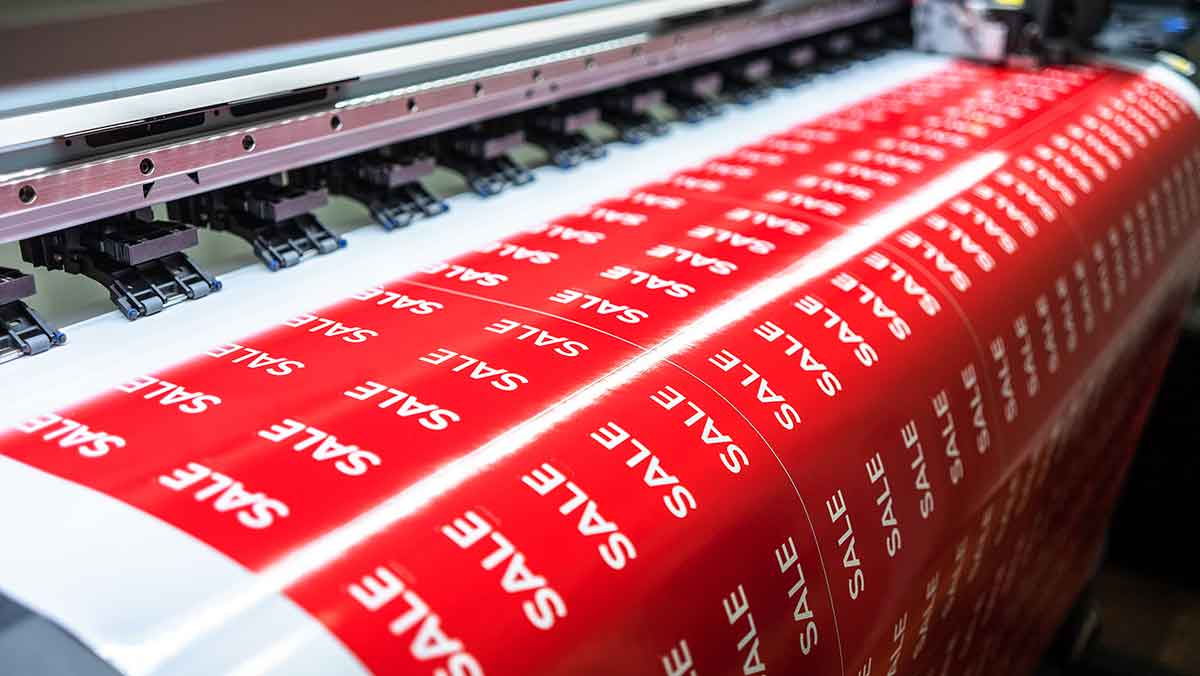Mahatma Gandhi once said, “The English language is so elastic that you can always find another word to say the same thing.” Sometimes those words are influenced by your geography or background. For example, if you’re in the Midwest and South, when it’s time for your evening meal, it’s supper time. But those in other parts of the country sit down for dinner. If you opt to consume a carbonated beverage with your supper you’ll have a Coke or pop while those having dinner drink soda. But it’s not just geography that dictates your vernacular. Industries, companies and job functions all have their own unique set of words. For example, if you’re shipping a package, do you use a label or a sticker to direct it to its end destination? Or, when you decorate your laptop do you apply a label or a sticker? Regardless of the regional variations that may influence the terminology of your evening meal, the words are essentially interchangeable. Is the same true for a sticker and a label? What’s the difference?
Defining Stickers and Labels
Both stickers and labels incorporate a face stock material with an adhesive. But, just as two peas in a pod differ in slight ways, so do stickers and labels.
Stickers
Stickers are often associated with personalization, branding, and artistic expression. They come in various shapes, sizes, and designs and are often associated with promotional giveaways, personal projects, and limited-edition products. Generally speaking, stickers tend to be more informal and temporary.
Labels
In contrast, labels are connected to more formal, high-volume applications. Labels are integral for compliance in industries such as healthcare, electronics, food and more. Functionality, durability, and uniformity are paramount.
Differences Between Sticker and Label Materials
The materials used to produce stickers and labels differ. Stickers often use materials optimized for visual appeal, while labels prioritize functionality. For example, labels often function in harsh conditions, including hot and cold temperature extremes, exposure to chemicals, and more. As a result, they typically use more specialized face stocks and adhesives.
If you need a custom label or sticker, use this information to help guide the process.
Material and Durability Considerations
The materials used for stickers and labels are dictated by their intended use and environment. Stickers, aimed at personalization and temporary applications, commonly use paper, vinyl, or polyester. These materials amplify colors and detailed designs, which make them ideal for decorative or promotional use. They are also cost-effective for short-term applications.
Conversely, labels require more robust materials to withstand various environmental challenges. They are often made from materials like polypropylene, polyethylene, or durable synthetic papers. These materials are resistant to factors such as moisture, UV light, chemicals, and temperature extremes. This makes them suitable for use in industries where durability is key, such as in healthcare, electronics, or food packaging.
Durability
The durability of stickers and labels also vary. Although versatile in design, stickers are generally less durable than labels. They are more susceptible to fading, peeling, or wearing off when exposed to environmental elements like sunlight, water, or physical abrasion. Thus, they are more suited for indoor use or short-term outdoor applications.
Labels are engineered for longevity and durability. They are often treated with UV-resistant coatings, waterproofing, and other protective layers to ensure they can withstand harsh conditions without degrading. This makes labels the go-to choice for applications where long-term readability and adherence are critical.
Customization and Printing Options
There are a wide range of customization options for stickers and labels that cater to a wide range of needs and preferences. Stickers offer flexible design, shape, and size options. They can be die-cut into intricate shapes and printed with a variety of colors and finishes. This makes them perfect for creative applications, branding, and personalized promotional materials.
While often more standard in shape and size due to their functional nature, labels are also highly customizable. Label printing technology makes it possible to produce high-quality, detailed graphics and text on labels. This is particularly important in industries where specific information, barcodes, or safety warnings must be clearly displayed.
Printing Technologies
The print technologies employed for stickers and labels reflect their distinct uses. Stickers often use digital printing, which is excellent for high-detail, full-color images and allows for cost-effective short runs. This is ideal for custom, limited-edition stickers or small batches.
Labels, especially those used in high-volume applications, are often printed using flexography or offset printing. Both are suitable for large runs, offering speed and efficiency. They provide durability and high-resolution print quality, essential for scanning and compliance purposes.
Stickers and Labels and United Ad Label
Whether it’s a sticker, label or other unique terminology, UAL understands the language. We offer a diverse range of materials, adhesives, and printing capabilities to ensure you receive a product perfectly suited to your needs. Whether it’s one of our 4,500+ stock items produced for its end-use application or a custom label with unique requirements, you can expect our stickers and labels to meet your specific needs.
